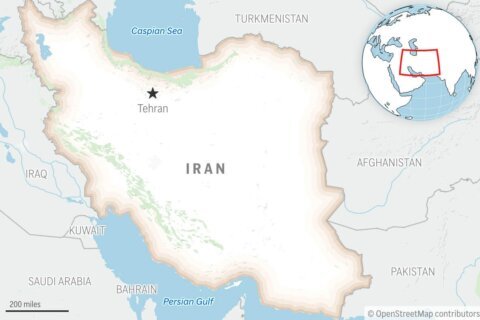WASHINGTON — The legend of Cool “Disco” Dan is familiar to anyone who lived in D.C. in the 1980s and 1990s. His graffiti could be seen all throughout the city, especially along the Red Line heading out of Union Station.
Despite his presence in the region, the artist, whose birth name is Dan Hogg, remained in the shadows until now.
A new documentary, “The Legend of Cool ‘Disco’ Dan,” dives not only into his history, but also that of the “other Washington,” the underbelly of the nation’s capital that became known as the murder capital for many years.
Dan first made a name for himself in 1983 after moving from Maryland into the District. The native Bostonian immersed himself in Go-Go, hitting up local music clubs to hear musicians like Chuck Brown. Fans would pass around bits of paper with requests, and the bands would oblige.
Around the same time, in D.C. and throughout the country, graffiti became a popular form of urban art. People would write their names on walls and storefronts, creating unique monikers and cartoon characters to separate themselves from the herd.
“What would really get people was when you would see a name in four or five places throughout the city,” he says. “Some of the names were really unique. It made you look forward to seeing it every day.”
Dan picked his name as a homage to a Maryland cult hero of the time, Disco “Dynamite” Danny, and saw graffiti as a way to circumvent the increasingly violent world of D.C. Rather than turning to drugs or gangs like many of his contemporaries, he turned to art.
“I was hard driven by graffiti,” he says. “I was one of those guys who really wrote it everywhere. I would write it every possible place I could.”
As time went on and Dan’s art could be seen in more places, he became a local icon. Eventually, people began to recognize him and seek him out. The fame caught Dan by surprise, he says.
“I never knew a person before this who would get excited by a guy who writes his name on a wall,” he says. “It’s kind of like watching Michael Jackson grow up.”
In the new film, Dan is compared to both Zorro and the Lincoln Memorial. Musicians, journalists and other cultural icons give testament to his legacy, which lives on through faded spray paint in Northeast D.C. and parts of Prince George’s County.
But filmmaker Roger Gastman is quick to emphasize that the documentary is as much a tale about the city as it is a history of graffiti.
Gastman, 36, grew up in Bethesda at the tail end of Dan’s reign. He would hear stories about the famous graffiti artist, and also the circles he ran in — the music, the projects and the violence that many sought to escape. As a suburban kid, Gastman was enthralled with the inner working of urban D.C.
“The city went from normal to a horrific in a drop of a dime,” he says. “It was a real turning point.”
Gastman brought in other local heroes to tell the story of D.C. in the ’80s and ’90s. Native son and former Black Flag lead singer Henry Rollins narrates the film. Local musicians like Minor Threat’s Ian MacKaye and the Godfather of Go-Go Chuck Brown also make appearances.
“This isn’t a regional film,” he says. “It’s really the story of so many cities.”
For Dan, making the documentary was a way back into the public world after spending years in the shadows. He will make his first ever public appearance Saturday, Dec. 14, at the Howard Theatre, where “The Legend of Cool Disco Dan” will also be screened.
Dan says he looks forward to finally meeting some of his fans.
“I’m just trying to teach a lot of these young guys that being in crews is not what you think it is. It led to a lot of serious things, like a lot of people getting killed,” he says.
“I try to be a big brother to a lot of the youth.”
Catch Dan and a screening of the new documentary Dec. 14. The event starts at 1 p.m. Tickets and more information can be found here.
And watch a preview of the film below:
Yekra Player
Yekra is a revolutionary new distribution network for feature films.
Follow @WTOP and @WTOPliving on Twitter.







